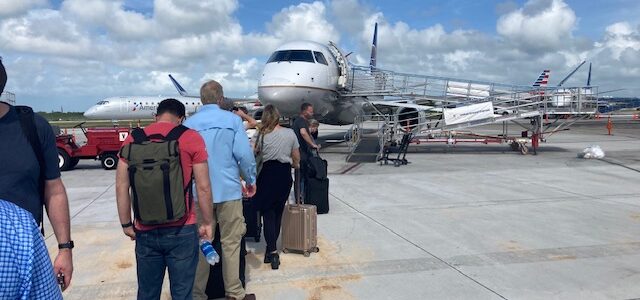
Are Airlines Responsible for Turbulence Injuries?
Are airlines responsible for turbulence injuries?
In-flight turbulence is the primary cause of injuries to airline flight attendants and passengers in non-fatal accidents. In certain cases of in-flight injuries, the airline, maintenance contractors, plane manufacturer, aircraft retro-fitter, or even the manufacturer of a faulty aircraft part, can be held responsible.

The question raised is whether airlines should be held responsible for injuries resulting from turbulence during a flight. Turbulance has been defined as “violent or unsteady movement of air.” Turbulence is a frequent cause of injuries to both passengers and flight attendants in nonfatal accidents. If a flight attendant is thrown down and. injured during turbulence, they would likely pursue help with medical bills and time loss from work with the airlines workers compensation insurance carrier. In addition, like a passenger, the flight crew member may also have a claim against the manufacturer of the plane, maintenance contractor &/or the manufacturer of a defective aircraft component may be held accountable in certain cases.Unlike the injured passenger, the flight crew member would likely not be able to sue their employer, the airline.
In a case that Lawyer Doug Landau handled, the plaintiff was traveling to Dulles International Airport (IAD). During the airplane’s arrival, it experienced a hard landing, causing turbulence inside the cabin. This turbulence dislodged an overhead unit containing the air vents and light fixtures (the Passenger Service Unit, or “PSU”), which fell onto the plaintiff’s head and shoulder area. The plaintiff received no warning before the device fell, and he had no way to avoid being struck by it, as he was buckled into his seat.
The defendant airlines are common carriers, with a duty to ensure passenger safety. The claim of the lawsuit was that the defendants breached their duty to provide safe transportation services, equipment, and facilities for passengers, including the plaintiff. This breach was tried as the proximate cause of the plaintiff’s injuries and losses.

The airlines did not provide adequate management, training, and supervision for employees and agents responsible for maintaining aircraft safety. This all allowed a hard landing that jostled passengers and dislodged airplane equipment. Their failure to perform these duties increased the risk of harm to invitees, including the plaintiff. As a result of the defendant’s breach of duty, the plaintiff was injured during transportation.
The legal procedures for handling turbulence-related injuries vary from international and domestic flights. In the case of international flights, these injuries might fall under the jurisdiction of the Montreal Convention. You can explore our detailed articles on this legislation for more information.
Common in-flight accidents due to turbulence include: Falling Baggage, Beverage Burns, Service Cart Impacts, Aisle Trip Hazards, and Lack of Seatbelt Warnings.
If you, or someone you know, has been injured as the result of an airplane or other air travel-related incident, during a domestic flight or during an international trip, and there are questions about what laws apply, please contact us at (703) 796–9055 or email frontdesk@landaulawshop.com.
